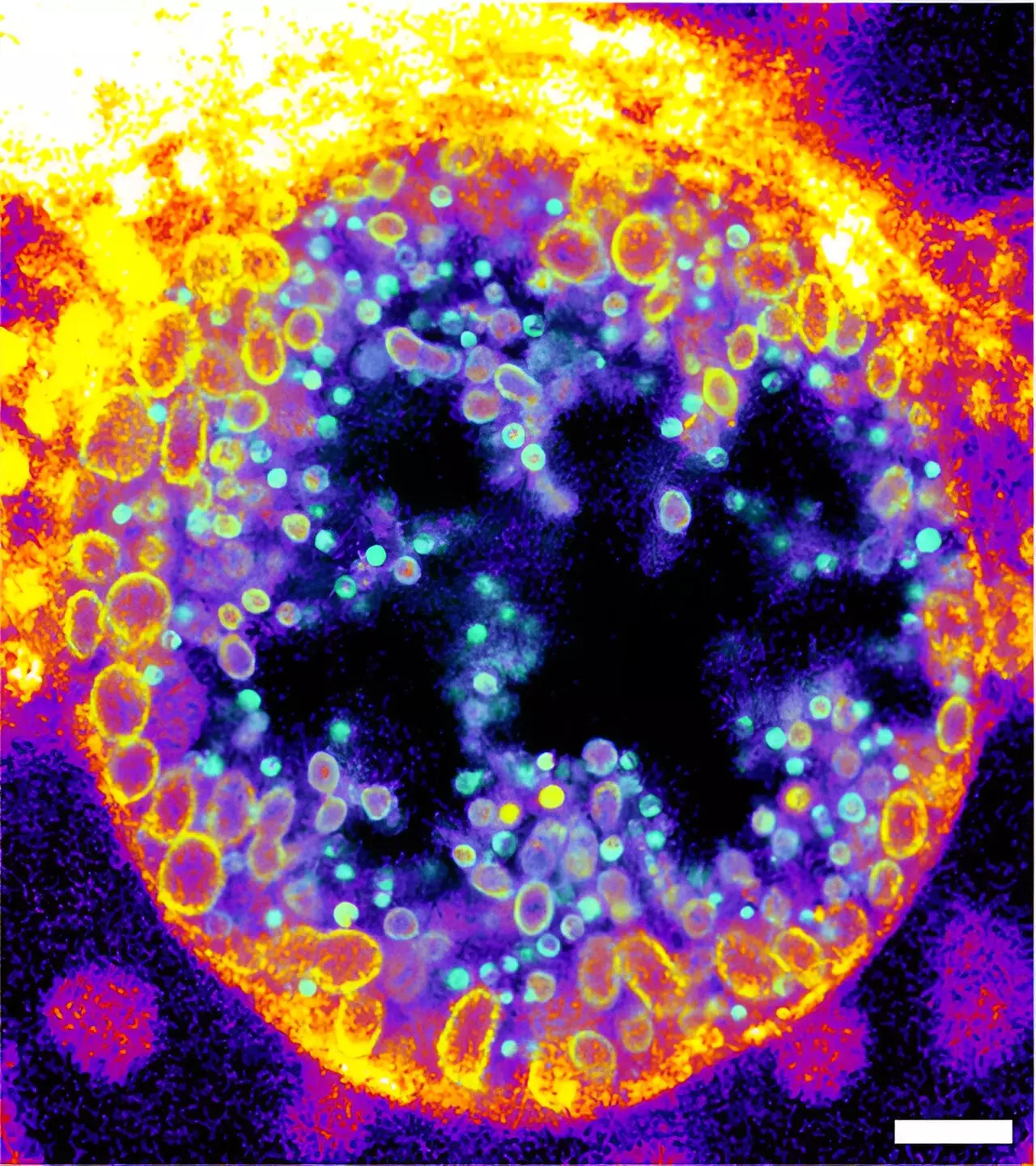Sphingolipids, a class of lipids first identified in the 19th century by German pathologist Ludwig Thudichum, play a critical role in various biological processes, particularly within the nervous system. Thudichum’s discovery marked the beginning of a complex narrative surrounding sphingolipids, named after the Sphinx of Greek mythology due to their enigmatic nature. The metabolism of these lipids is intricate and vital, as dysregulation can lead to serious health conditions such as Gaucher’s disease and Fabry’s disease. More recently, sphingolipids have garnered attention in the context of infectious diseases, linking them to a spectrum of viral and bacterial pathogens, including notorious viruses like Ebola and outbreaks such as COVID-19.
Sphingomyelin, a prominent sphingolipid, functions at the crossroads of metabolism and infection. Its degradation, primarily mediated by the enzyme sphingomyelinase, is fundamental in the life cycle of several microorganisms. This degradation releases ceramide, a molecule that can influence cellular functions and contribute to the pathogenicity of various infectious agents. Despite its significance, visualizing the sphingomyelin degradation process during infections has been an elusive goal for researchers.
A Collaborative Breakthrough
Recent efforts by a team from Würzburg and Berlin have heralded a significant advancement in the exploration of sphingomyelin metabolism. These researchers, affiliated with a unique inter-disciplinary collaborative framework called the Research Training Group 2581, have successfully engineered novel sphingomyelin derivatives. This trifunctional sphingomyelin variant not only preserves the structural properties of its natural counterpart but is also designed with additional functionalities that enhance its utility in infection research. Professor Jürgen Seibel, one of the leading scientists in this project, emphasized the difficulty involved in crafting such molecules that could seamlessly integrate into metabolic pathways while providing new experimental applications.
Breakthrough Methodologies in Visualization
The researchers’ innovative approach, characterized by advanced techniques like expansion microscopy and click-chemistry, has empowered them to trace the distribution and metabolism of sphingomyelin within human cells. Their findings are crucial as they provided insights into the role of sphingomyelin during infections caused by Chlamydia, a bacterium implicated in various reproductive and oncological diseases. Notably, the team demonstrated how the content of these engineered sphingomyelins fluctuated as Chlamydia transitioned from a dormant to an infectious state. This revelation underscores the potential of targeted strategies that could disrupt the lifecycle of pathogens by manipulating lipid metabolism.
The implications of this research are profound. By establishing a method for visualizing sphingomyelin degradation, the scientists pave the way for novel therapeutic interventions aimed at tackling infections that have hitherto been challenging to manage. This new understanding of sphingolipid metabolism can foster the development of drugs that modulate lipid interactions within host cells, potentially leading to innovative treatments for infections and metabolic disorders alike.
Furthermore, this research exemplifies the power of collaborative science. Bringing together chemists, physicists, and biologists not only stimulates creativity but also expands the horizons of what is scientifically possible. The ability of various disciplines to combine their knowledge and techniques is vital for solving complex biological questions, particularly those pertaining to human health.
The breakthroughs achieved by the Würzburg and Berlin research teams illuminate the multifaceted role of sphingomyelin in both health and disease. Their novel visualizations add invaluable tools to the arsenal of infection research, promising new strategies against diseases linked to sphingolipid metabolism. As research continues to unfold in this domain, the potential for therapeutic advancements remains significant, heralding a new era in the fight against infectious diseases motivated by a deeper understanding of lipid biology.

